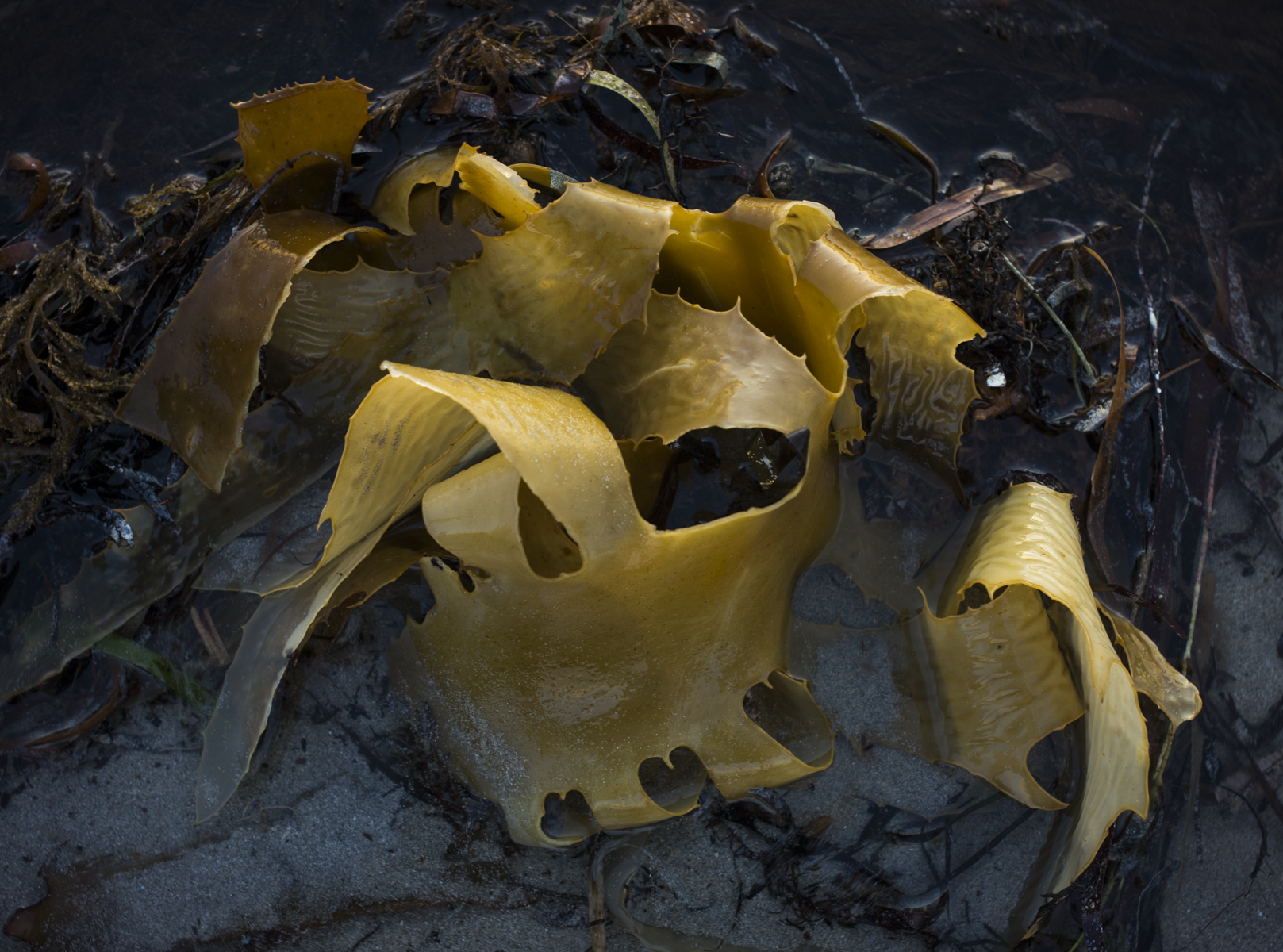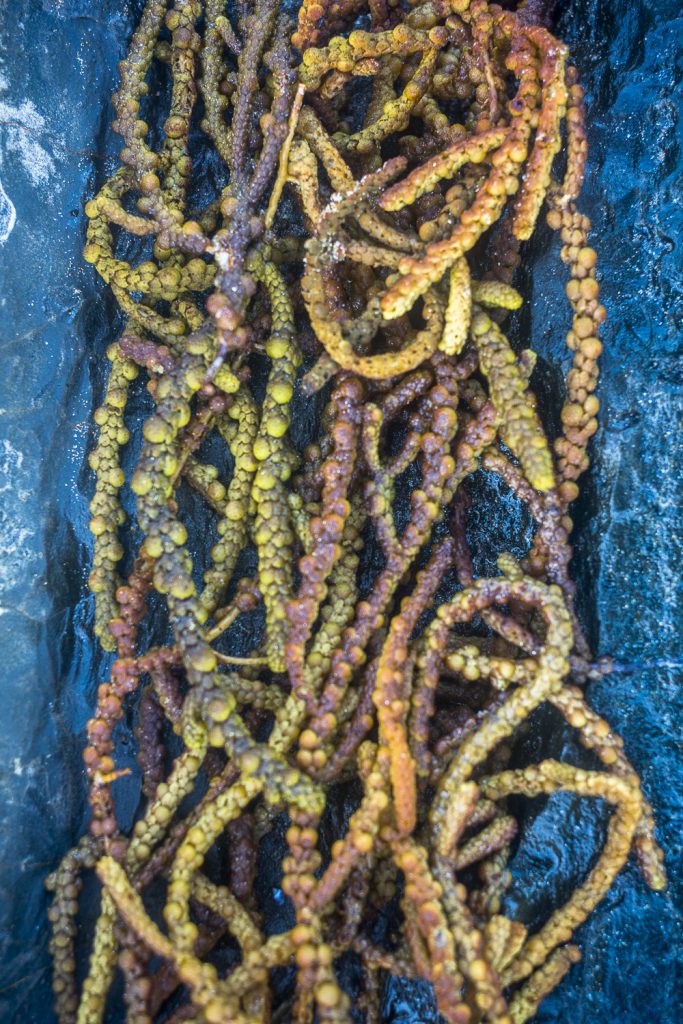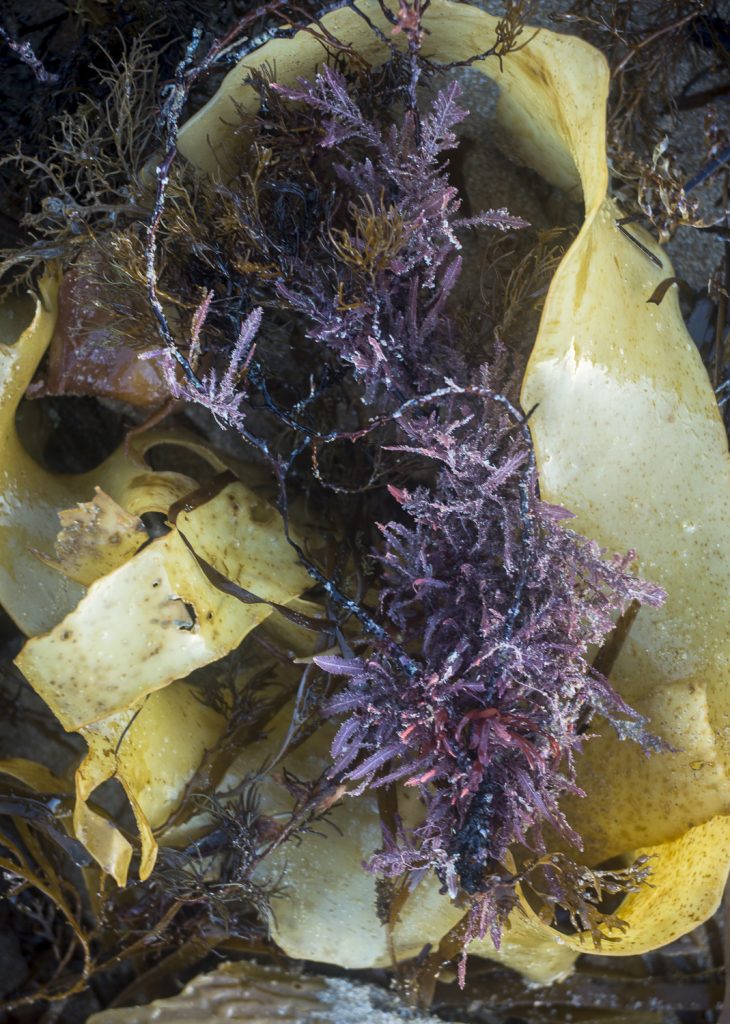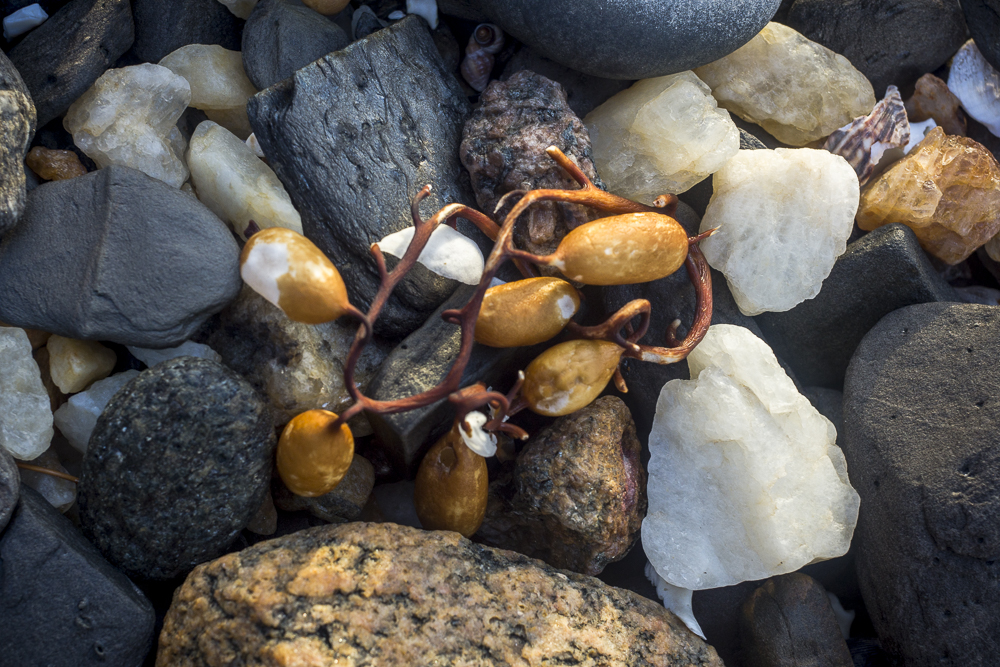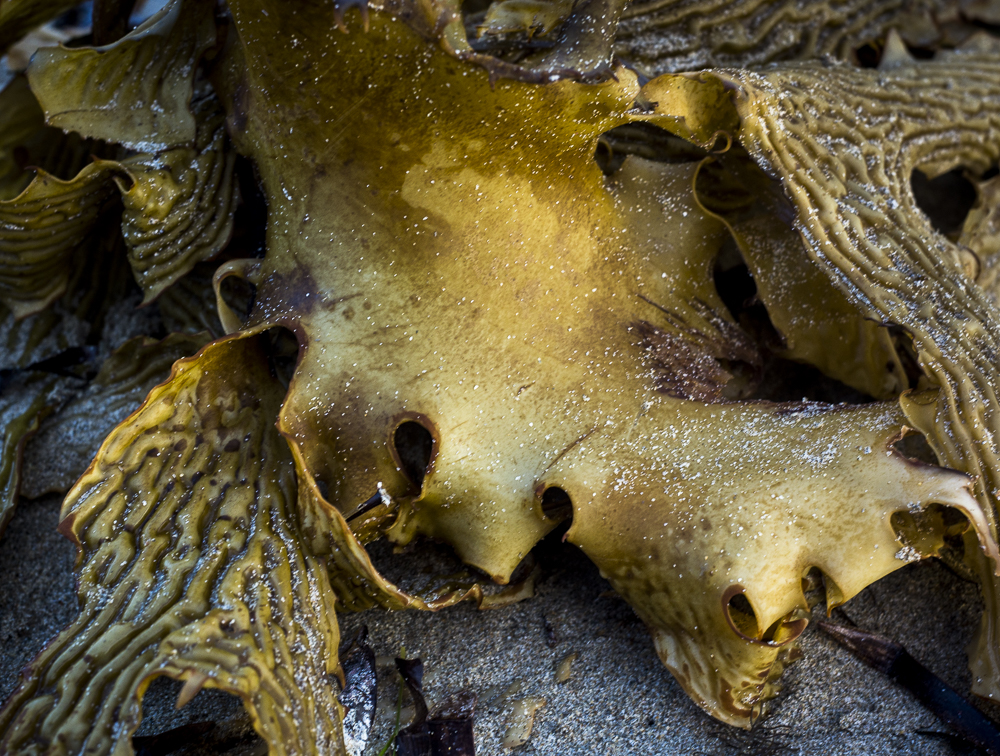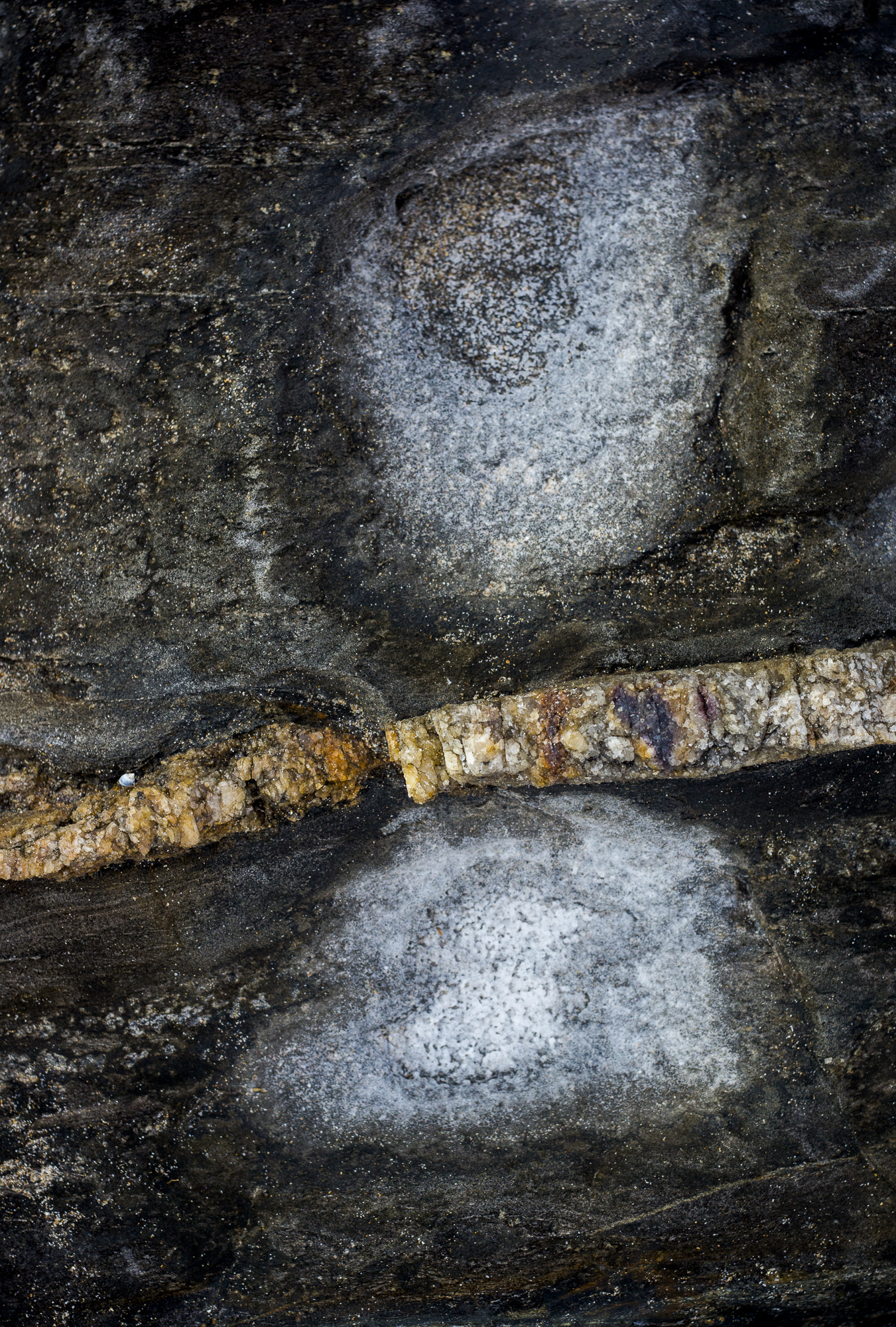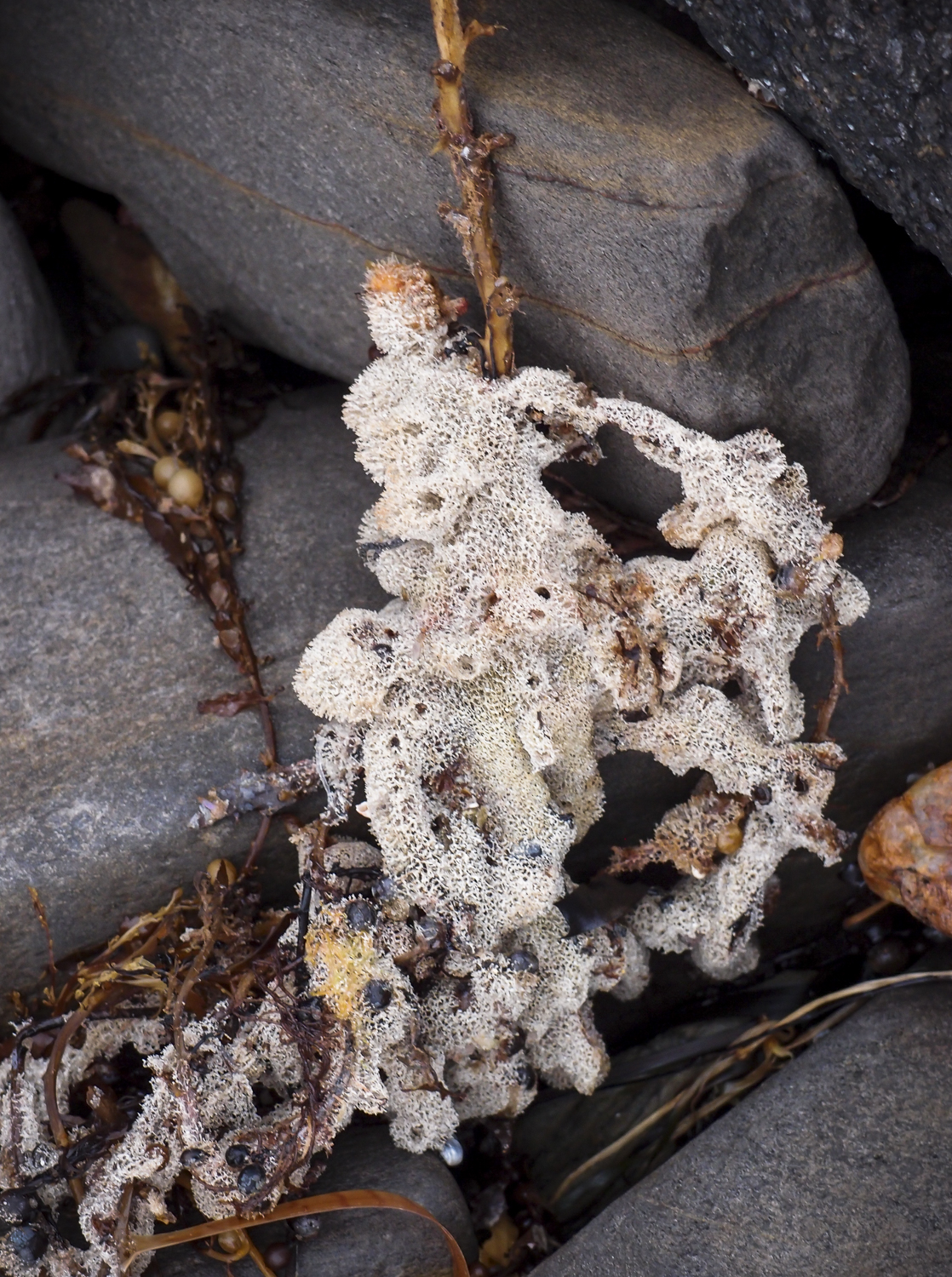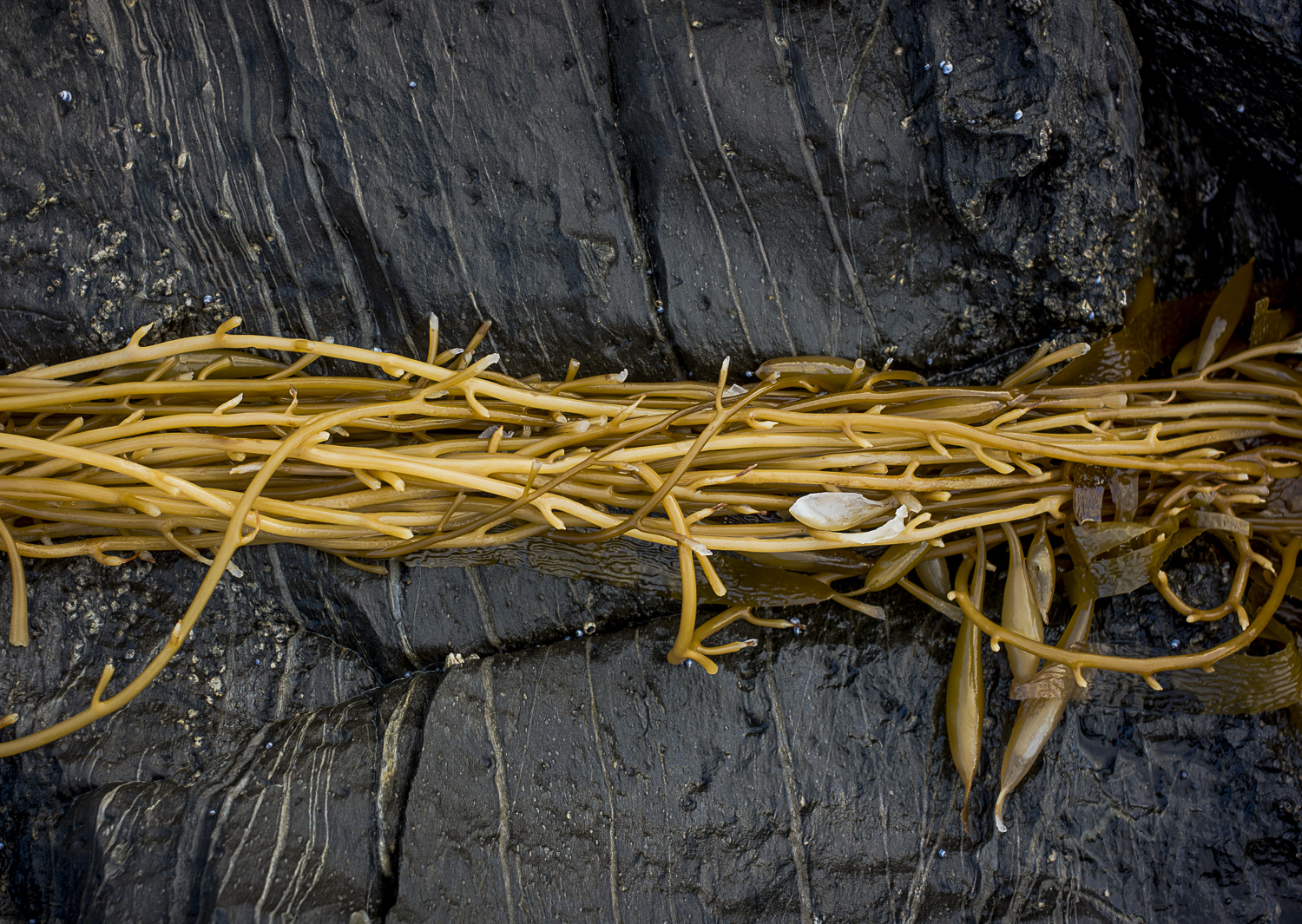Winter on the southern Fleurieu Peninsula was wet and stormy with high tides on the coast, making it difficult to access the coastal rocks and to photograph along the littoral zone and continue making abstractions. During July walking the poodles was limited to walking along the paths on top of the coastal cliffs between Petrel Cove and Kings Beach.
This image of seaweed lying on the rocks was made in early June when the tide was low enough to walk in the littoral zone in June. It was during July that we experienced the very high tides.
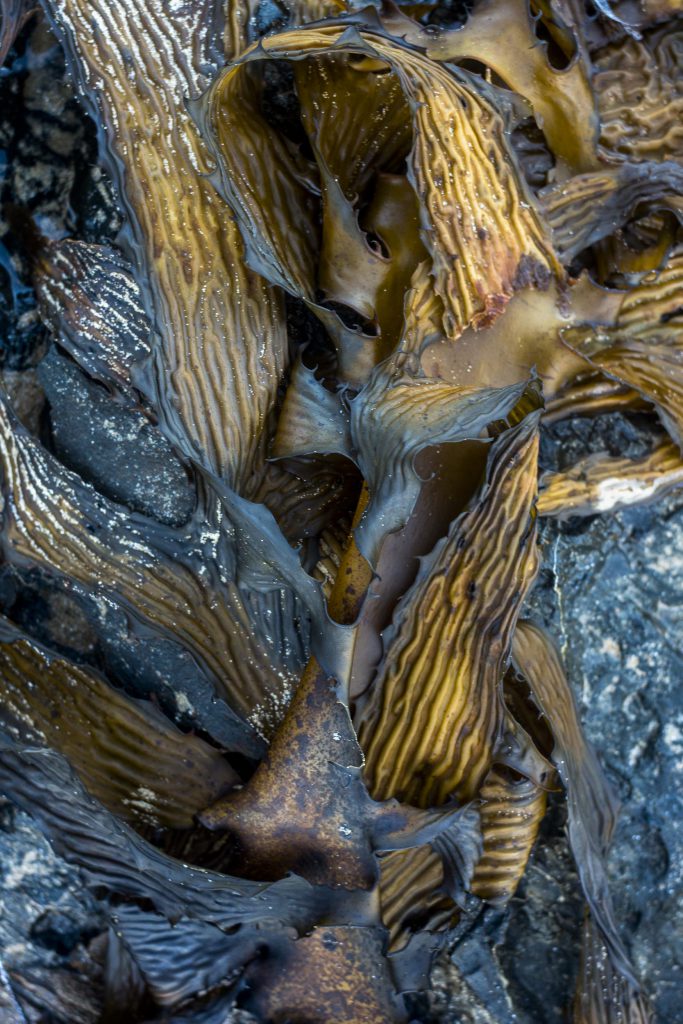
The photo was made just after we’d returned from the camel trek from Blinman to Lake Frome. I recall it being a joy to walk by the sea after 14 days in the arid Northern Flinders Ranges. Water there was scarce: the creeks were dry and there was just the odd water hole.
